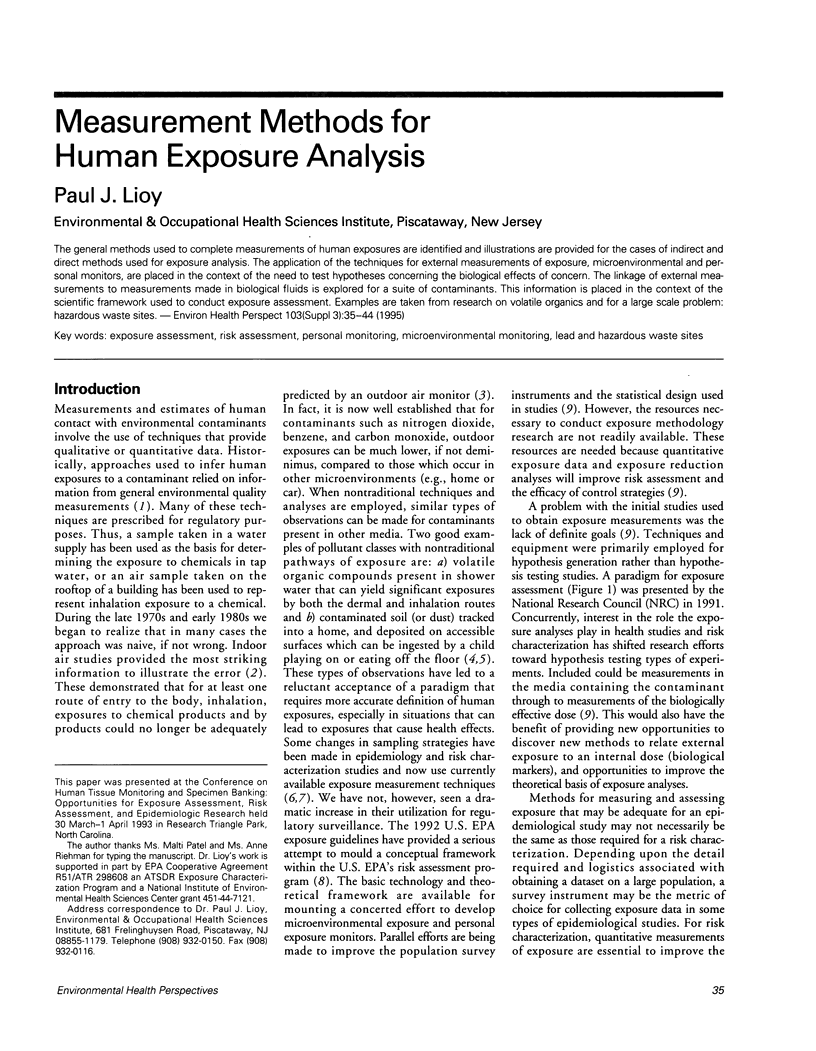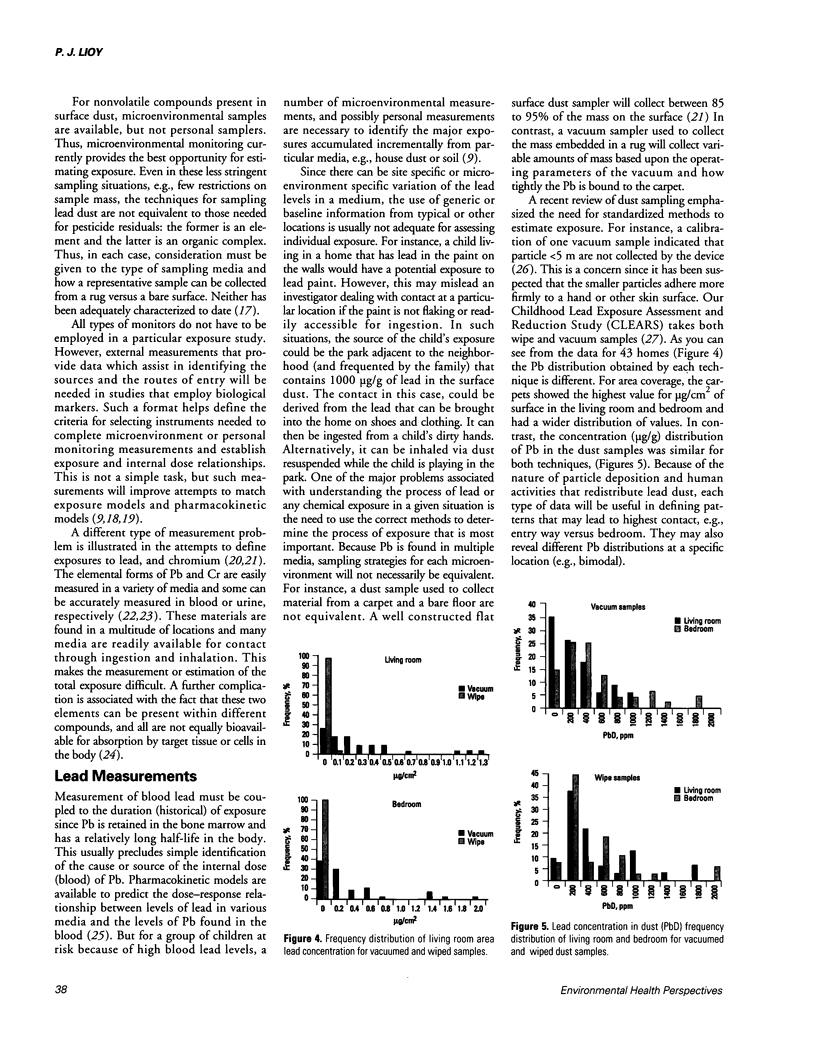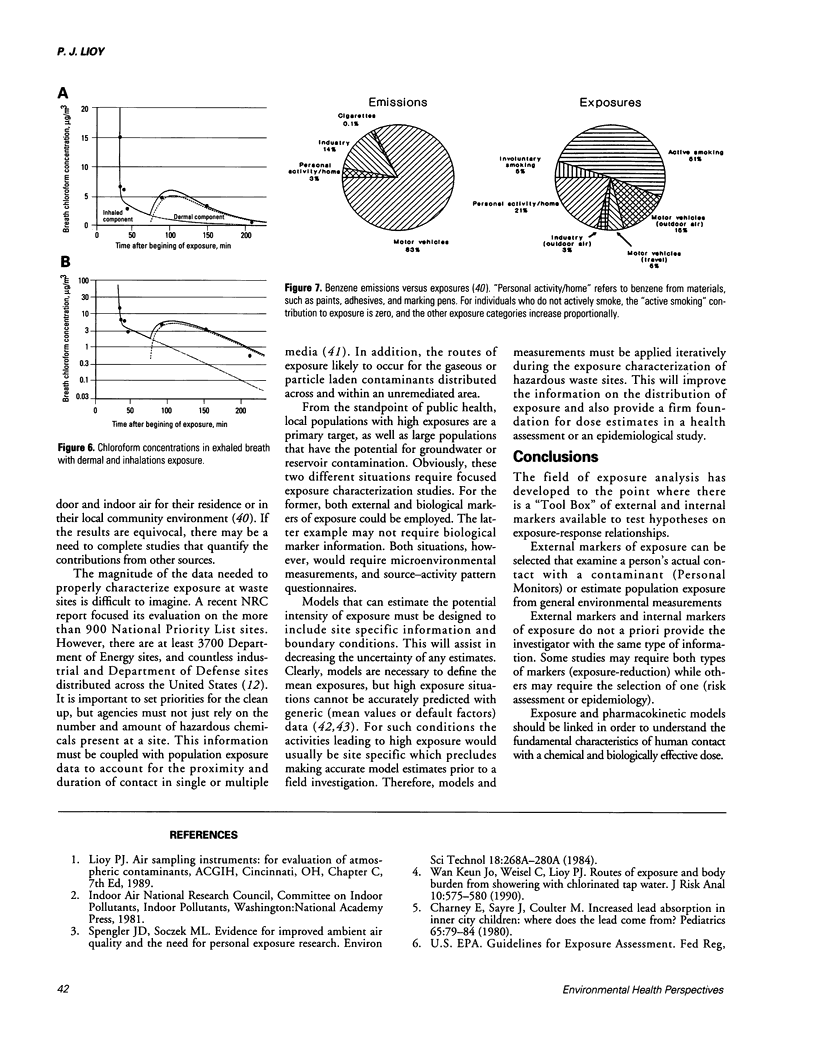Abstract
The general methods used to complete measurements of human exposures are identified and illustrations are provided for the cases of indirect and direct methods used for exposure analysis. The application of the techniques for external measurements of exposure, microenvironmental and personal monitors, are placed in the context of the need to test hypotheses concerning the biological effects of concern. The linkage of external measurements to measurements made in biological fluids is explored for a suite of contaminants. This information is placed in the context of the scientific framework used to conduct exposure assessment. Examples are taken from research on volatile organics and for a large scale problem: hazardous waste sites.
Full text
PDF








Selected References
These references are in PubMed. This may not be the complete list of references from this article.
- Burke T. A., Akland G. Use of gasoline exposure data and assessment. A summary report of work group III. J Expo Anal Environ Epidemiol. 1992 Jan-Mar;2(1):147–150. [PubMed] [Google Scholar]
- Freeman N. C., Waldman J. M., Lioy P. J. Design and evaluation of a location and activity log used for assessing personal exposure to air pollutants. J Expo Anal Environ Epidemiol. 1991 Jul;1(3):327–338. [PubMed] [Google Scholar]
- Jo W. K., Weisel C. P., Lioy P. J. Routes of chloroform exposure and body burden from showering with chlorinated tap water. Risk Anal. 1990 Dec;10(4):575–580. doi: 10.1111/j.1539-6924.1990.tb00541.x. [DOI] [PubMed] [Google Scholar]
- Lioy P. J., Freeman N. C., Wainman T., Stern A. H., Boesch R., Howell T., Shupack S. I. Microenvironmental analysis of residential exposure to chromium-laden wastes in and around New Jersey homes. Risk Anal. 1992 Jun;12(2):287–299. doi: 10.1111/j.1539-6924.1992.tb00676.x. [DOI] [PubMed] [Google Scholar]
- Rao H. V., Brown D. R. A physiologically based pharmacokinetic assessment of tetrachloroethylene in groundwater for a bathing and showering determination. Risk Anal. 1993 Feb;13(1):37–49. doi: 10.1111/j.1539-6924.1993.tb00727.x. [DOI] [PubMed] [Google Scholar]
- Samet J. M., Marbury M. C., Spengler J. D. Health effects and sources of indoor air pollution. Part II. Am Rev Respir Dis. 1988 Jan;137(1):221–242. doi: 10.1164/ajrccm/137.1.221. [DOI] [PubMed] [Google Scholar]
- Sexton K., Selevan S. G., Wagener D. K., Lybarger J. A. Estimating human exposures to environmental pollutants: availability and utility of existing databases. Arch Environ Health. 1992 Nov-Dec;47(6):398–407. doi: 10.1080/00039896.1992.9938381. [DOI] [PubMed] [Google Scholar]
- Sheehan P. J., Meyer D. M., Sauer M. M., Paustenbach D. J. Assessment of the human health risks posed by exposure to chromium-contaminated soils. J Toxicol Environ Health. 1991 Feb;32(2):161–201. doi: 10.1080/15287399109531476. [DOI] [PubMed] [Google Scholar]
- Stern A. H., Freeman N. C., Pleban P., Boesch R. R., Wainman T., Howell T., Shupack S. I., Johnson B. B., Lioy P. J. Residential exposure to chromium waste--urine biological monitoring in conjunction with environmental exposure monitoring. Environ Res. 1992 Aug;58(2):147–162. doi: 10.1016/s0013-9351(05)80211-7. [DOI] [PubMed] [Google Scholar]
- Upton A. C., Kneip T., Toniolo P. Public health aspects of toxic chemical disposal sites. Annu Rev Public Health. 1989;10:1–25. doi: 10.1146/annurev.pu.10.050189.000245. [DOI] [PubMed] [Google Scholar]
- Wallace L. A. Major sources of benzene exposure. Environ Health Perspect. 1989 Jul;82:165–169. doi: 10.1289/ehp.8982165. [DOI] [PMC free article] [PubMed] [Google Scholar]
- Weisel C. P., Lawryk N. J., Lioy P. J. Exposure to emissions from gasoline within automobile cabins. J Expo Anal Environ Epidemiol. 1992 Jan-Mar;2(1):79–96. [PubMed] [Google Scholar]


